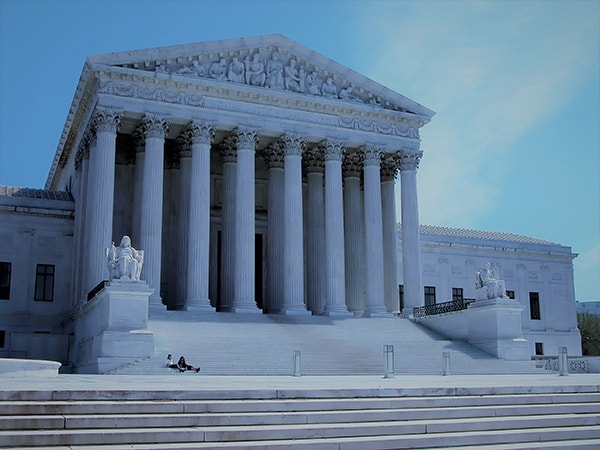Debunking the Process of Federal Appeals: What You Need to Know
Browsing the detailed world of government charms can often feel like traversing undiscovered waters for those not familiar with the process. Understanding the nuances of appellate court territory, the complexities of filing a notification of charm, presenting an engaging short, and making an influential dental debate are crucial elements that can considerably affect the result of a situation. By untangling the layers of complexity surrounding government appeals, people can obtain a more clear insight into the mechanisms that control this crucial stage of the lawful system.
Comprehending Federal Appeals Process
Exploring the intricate world of the federal appeals procedure unveils a systematic and structured trip through the judicial system - federal appeals lawyers in Idhao. Federal appeals act as a critical system for assessing choices made by reduced courts. Understanding this procedure is vital for anybody entailed in legal process at the federal level
The process typically begins with an event dissatisfied with a lower court's ruling submitting a notice of appeal. This causes a testimonial by a greater court, where a panel of courts evaluates the legal debates presented by both events. Briefs laying out the legal thinking behind each event's placement are sent, and dental disagreements might be heard to clarify intricate issues.
The appellate court's decision is based on an extensive evaluation of the reduced court's procedures and the debates presented. Once the appellate court gets to a choice, it can verify, reverse, remand, or customize the reduced court's judgment, supplying clarity and finality to the legal dispute.
Appellate Court Jurisdiction Described

Appellate courts have jurisdiction over certain sorts of cases, usually those entailing legal mistakes, procedural issues, or inquiries of legislation instead of valid disagreements. The territory of appellate courts is typically described in laws and legislations that regulate the court system. Comprehending appellate court territory is critical for parties involved in the charms procedure as it determines whether a case is eligible for review and the extent to which the appellate court can interfere in the reduced court's decision.
Filing a Notice of Allure
The first step in commencing the federal charms procedure includes filing a Notification of Charm with the appropriate appellate court. best federal appeal lawyers in new york. This vital document formally informs the court and the various other parties associated with the case that the appealing party intends to look for a review of the lower court's decision. Filing a Notice of Allure is a rigorous step-by-step requirement that establishes the appellate process moving
When preparing the Notice of Charm, it is necessary to make certain compliance with the certain policies and guidelines of the relevant appellate court. The document should generally consist of info such as the situation name, the lower court's name, the date of the judgment being appealed, and a succinct declaration indicating the premises for the allure.
Timeliness is essential when filing a Notice of Charm. Missing the deadline for sending this record can cause the charm being disregarded, underscoring the significance of accurate and prompt initiation of the appeals procedure. It is advisable to look for legal support to navigate the complexities of submitting a Notification of Allure properly.
Instruction and Dental Argument
In the appellate process, presenting created briefs and taking part in dental debates play essential roles in promoting for the appealing party's setting prior to the appellate court. Briefs are extensive lawful files that outline the parties' debates, legal authorities, and evaluation supporting their settings. These composed entries give the court with a thorough understanding of the realities of the situation, the relevant legislation, and why the appealing celebration thinks the lower court's decision ought to be reversed.
Adhering to the submission and testimonial of the briefs, dental debates provide the events a chance to more clarify their placements, attend to any kind of concerns the appellate judges may have, and emphasize bottom lines from their written briefs. Dental disagreements are a chance for the attorneys to persuade the judges via verbal campaigning for and actions to inquiries from the bench.

Receiving the Appellate Court Choice

Verdict
In final thought, the government charms process is a facility however important action in seeking justice. Understanding the appellate court jurisdiction, submitting a notification of appeal, preparing briefs, and presenting oral disagreements are all important components of this procedure. Inevitably, obtaining the appellate court choice can provide clarity and resolution to legal disputes. It is essential to browse the government charms procedure with persistance and focus to information to attain a reasonable result.
As we advance from recognizing the federal allures procedure to dissecting the ins and outs of appellate court territory, a basic aspect comes to light relating to the authority and limitations of these higher courts in the legal landscape. Appellate court jurisdiction refers to the scope of situations that a specific appellate court has the power to decide and evaluate upon. Unlike test courts that listen to situations for the very first time, appellate courts are restricted to examining decisions made by lower courts. Recognizing appellate court territory is important for events involved in the appeals process as it figures out whether a case is eligible for evaluation and the level to which the appellate court can intervene in the lower court's decision.
Whether the appellate court affirms, turns around, or remands the reduced look at here now court's choice, recognizing the implications of the ruling is essential for all celebrations entailed in the appellate procedure.